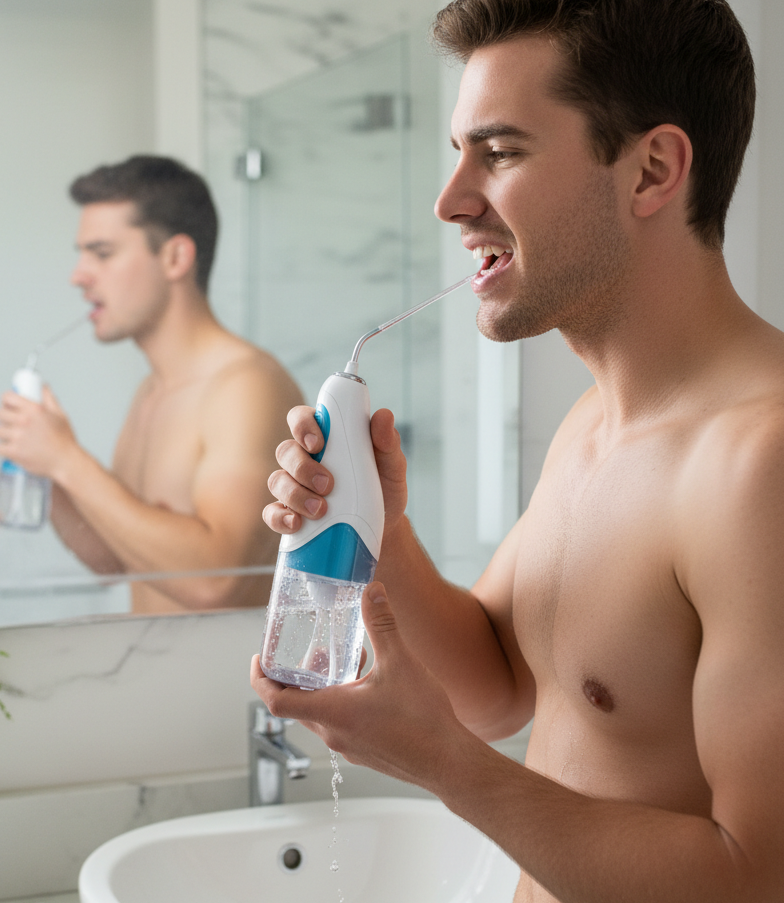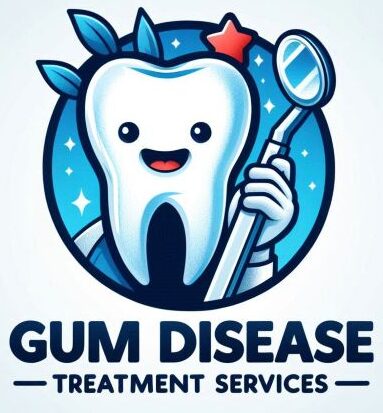Looking after your gums is much easier when you have the right tools. I’ve noticed water flossers—those handy gadgets that gently stream water between your teeth—are getting more love these days. You might be wondering if they’re truly good for your gums or just another extra gadget sitting on your bathroom counter. I will be sharing the real benefits of water flossers for gum health, which I learned after testing them and checking out what the research actually says.

What Do Water Flossers Actually Do?
Water flossers work by sending a pressurized, pulsating stream of water right between your teeth and just under the gumline. Unlike regular string floss that you drag between your teeth, water flossers basically flush out food bits and bacteria that like to hide in those tough-to-reach spots.
The stream is gentle on your gums but strong enough to push out plaque and debris. For anyone who finds regular flossing a hassle—whether it’s due to braces, bridges, sensitive gums, or just plain impatience—a water flosser can significantly improve your gum health.
Key Benefits of Water Flossers for Gum Health
There are real reasons why dental pros are recommending these devices more and more. Here are some well-documented, practical benefits I’ve noticed when it comes to keeping your gums in good shape:
- Reduces Bleeding and Gum Inflammation: When I switched to a water flosser, I saw less bleeding and noticed my gums felt less swollen. Clinical studies back this up, showing a real drop in gum inflammation after a few weeks of consistent use.
- Removes Plaque Below the Gumline: This area is honestly the trickiest to clean. The targeted stream of water can sweep away more bacteria than brushing alone and often does better than string floss for those hidden zones.
- Easy on Sensitive Gums: If you have trouble with string floss cutting your gums or causing soreness, water flossers offer a softer clean without the discomfort.
- Reaches Tight Spots and Dental Work: Braces, implants, and bridges form nooks where food hides. Water flossers can reach these spots where floss cannot reach.
Links to published research, like the studies outlined by JADA, have shown these effects both in people with gum disease and in healthy mouths. So, it’s not just a small benefit for a few.
Water Flossers and Gum Disease
If you’re concerned about gum disease, you’re definitely not alone. It’s one of the most common oral health issues, starting with red, swollen gums. Water flossers are a really useful tool for dealing with both gingivitis (the early stage of gum disease) and more stubborn cases of gum infection.
Can a Water Flosser Help With Gum Disease?
The simple answer is yes. Using a water flosser alongside brushing connects to less bleeding, healthier gum pockets, and decreased plaque. Dentists often recommend these gadgets for their patients with gum disease, especially if hand flossing is tough or daily habits are inconsistent.
I find using a water flosser is much quicker than regular floss, making it way easier to stick with and keep your gums healthy every day.
Can a WATERPIK Reverse Gingivitis?
While a WATERPIK—or any water flosser—won’t cure gum disease overnight, research shows they can shrink gum bleeding and swelling with regular usage. If gingivitis is caught in the early stages, using a water flosser daily (alongside brushing) gives you a solid chance to reverse those early signs, especially if you also swing by your dentist for cleanings regularly.
It’s satisfying to see pink, firm gums after a few weeks, as opposed to the sore, red ones when plaque lingers too long. Learn more by visiting Waterpik for more information about improving gum health using a Waterpik.
Do Dentists Actually Recommend Water Flossers?
Many dental professionals are far more open to water flossers nowadays than they used to be. Many dental offices have these on hand for patient demos, and I often see hygienists go through the usage steps with patients. The American Dental Association (ADA) has given the Waterpik the ADA Seal of Acceptance for being safe and effective at removing plaque and reducing gingivitis (ADA Interdental Cleaning).
If you ask your dentist about bleeding or sensitive gums, don’t be surprised if they suggest a water flosser for your daily routine. I hear from many that patients using a water flosser regularly have fewer gum problems at checkups; therefore, less scraping and deep cleaning.
Getting Started With a Water Flosser: Tips for Success
Getting into water flossing is actually really simple. Here’s how I keep it mess-free and effective:
- Start with the lowest pressure setting. For those with sensitive gums, this feels more comfortable. Once you get used to it, you can raise the setting.
- Angle the tip at 90 degrees to your gumline. Aim just above the gum, not straight at it. Glide along the edge of each tooth and get both the outside and inside.
- Use room temperature water. Cold water can startle your gums, while warm water simply feels better.
- Do it over the sink. This isn’t the moment to multitask. Just lean over and go for it. It only takes a minute.
New routines stick when you do them regularly. Doing this every day sets you up for fresher breath and healthier gums.
Common Issues People Have With Water Flossers (And Workarounds)
Even though water flossers are fairly straightforward, a few things tend to be a problem for new users:
- Water splatter: I remind myself to keep my lips nearly shut around the nozzle and to start and stop the device only once it’s inside my mouth.
- Storage and counter space: Most water flossers use about as much space as an electric toothbrush, but cordless models are better for smaller bathrooms.
- Travel: A travel-sized water flosser works great if you’re on the move. The full-size ones aren’t really made for packing.
- Cost: While some models are on the expensive side, you can track down budget-friendly options that offer the basic perks. Watch for water flosser deals.
What About People With Dental Work?
For those with braces, bridges, or implants, regular flossing can be nearly impossible. Water flossers are excellent for cleaning around wires and dental hardware, and plenty of orthodontists give them the thumbs up for these cases. I’ve seen less buildup around braces since more friends and family picked up these devices.
Real-World Examples: How Water Flossers Improve Gum Health
- Busy parents: One minute with a water flosser after dinner can save the hassle of getting kids (and adults) to floss each night.
- Seniors with arthritis: Holding regular string floss can be tough with limited hand strength. A water flosser’s grip and single button make it easy for anyone.
- Tech fans: New models now include timers, adjustable pressure, and Bluetooth connections. If you like gadgets, you’ll probably enjoy tweaking your cleaning session.
Frequently Asked Questions
Is a water flosser good for gum disease?
Water flossers are recommended by dental pros because they’re strong at cleaning below the gumline. They help curb bleeding and swelling, making them a helpful extra in managing gum disease.
Can WATERPIK reverse gingivitis?
If gingivitis is found early, using a WATERPIK to flush out plaque daily can make a real difference. It helps your gums heal and can even turn around mild gingivitis if you stick with it and get professional cleanings when needed.
Do dentists actually recommend water flossers?
Most dentists and hygienists suggest water flossers, especially if your gums are sensitive, you have dental work, or string floss is a pain for you. The ADA’s seal on some products signals both effectiveness and safety.
Wrapping Up
A water flosser is a super practical gadget for anyone who likes easier and more comfortable gum care. It helps get rid of stubborn plaque, soothes bleeding gums, and turns day-to-day cleaning from a chore into a quick, doable task. It doesn’t replace brushing but works really well as part of a solid oral routine. Your gums (and your dentist) are sure to appreciate the difference you make with oral care.
